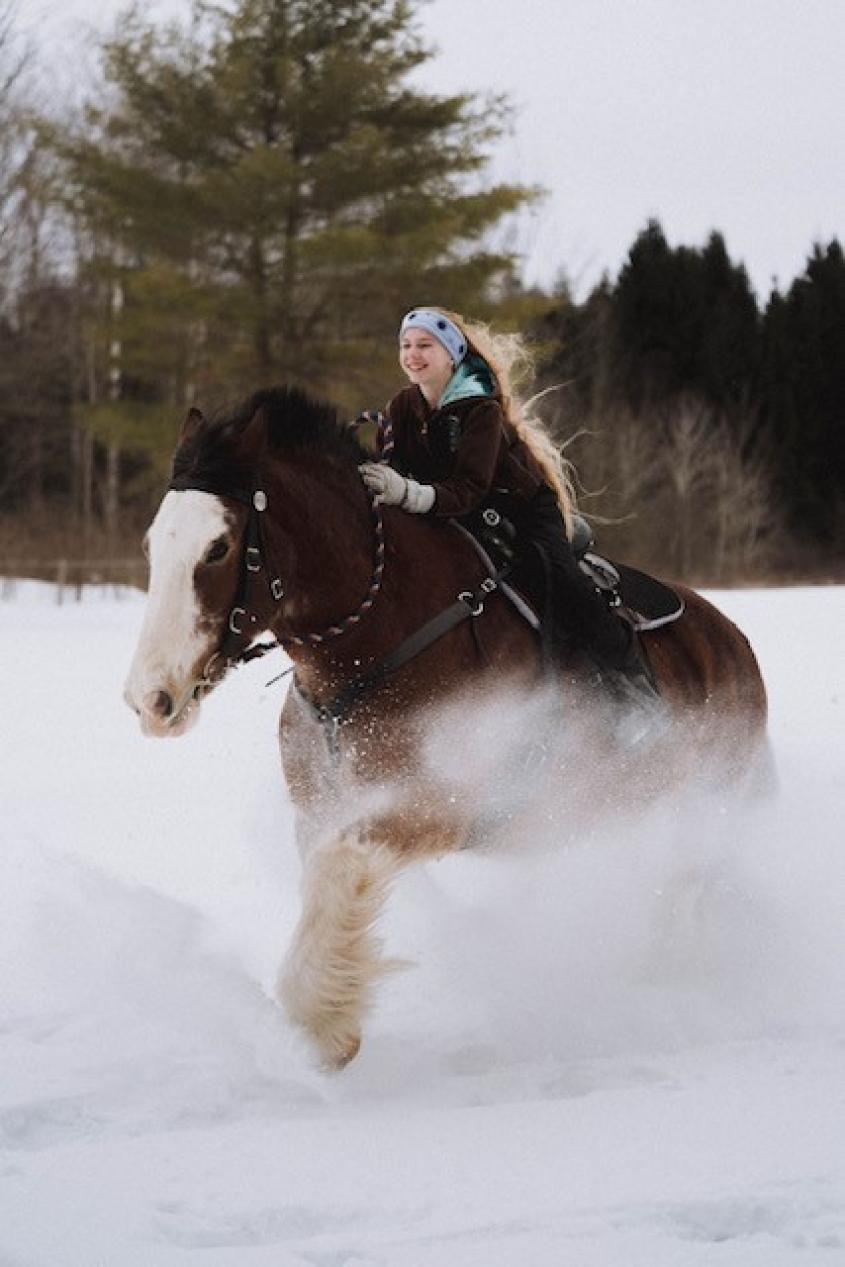Cornell’s Large Animal Internal Medicine service gets colicky Clydesdale back in the pasture
Dreamer, a 20-year-old Clydesdale gelding, came to Cornell University’s Equine Hospital with a mild case of colic. The Internal Medicine service sees colic cases frequently, and through their expert diagnostics and care, the draft horse was in good hands.
“Dreamer came to us when his owner noticed he was kicking at his abdomen and flank watching after he would eat his grain,” says Dr. Gillian Perkins, associate director of the Cornell University Hospital for Animals (CUHA) and senior lecturer of large animal medicine. “There was some concern that he might also have an abdominal mass, so they wanted to make sure he was examined fully.”
The clinical team, including large animal clinician Dr. Barbara Delvescovo, veterinary student Carly Weaver, and licensed veterinary technicians Dana Ursu and Rose Bush, jumped into action, doing a colic workup, in which they examined his mucus membranes, listened to his heart rate and gastrointestinal sounds, and conducted a rectal and ultrasound exam. They also did an abdominocenteis, or belly tap, which collects abdominal fluid that is within the abdominal cavity and surrounding the intestines, and bloodwork to test for any telltale signs of disease.
The colic examination and tests came back as mostly normal, except for a doughy feeling pelvic flexure, a part of the large colon. Thus, the team felt that Dreamer’s colic was not caused by anything serious such as twisted intestines or tumors, and was most likely caused by a feed impaction or gas, both of which typically pass with some time.
“We did keep him overnight just to observe him and make sure that his condition steadily improved,” said Perkins. They held him off of his feed overnight, and the next morning, the team performed a gastroscopy, where the inside of the stomach was visualized with a camera or endoscope. The stomach was clean without any gastric ulcers or masses. “We could see that he was doing well, so we didn’t put him on any intravenous fluids or other interventions—we always tailor our treatment of patients according to their overall health status, and we could tell that Dreamer didn’t need any additional treatments.”
After his assessment at CUHA, Dreamer returned home no worse for wear. Perkins says that horse owners should keep a close eye on their animals if they start to see signs of colic, and make sure to call their veterinarian right away. “If they see those signs persisting, they should talk with their veterinarian about whether the horse should be taken to a referral hospital in for a further workup, 24/7 care and observation.”
Written by Lauren Cahoon Roberts





